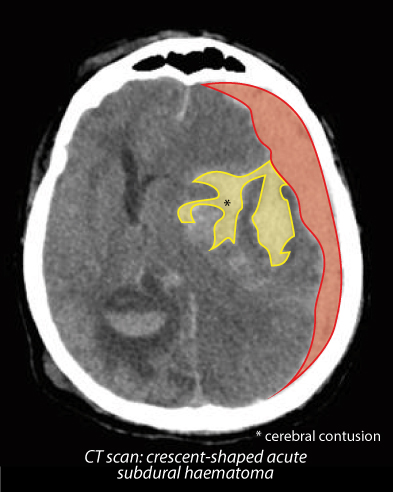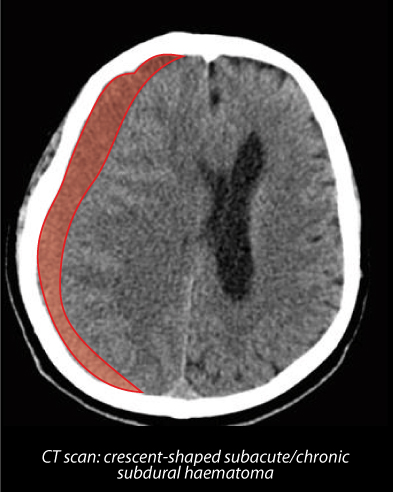Real or virtual spaces separate the three layers of meninges:
 : epidural space
: epidural space
 : subdural space
: subdural space 
Cranial
or extradural space


 becomes a real space
becomes a real space
Spinal
ou espace péridural
Cranial




Subarachnoid haemorrhage

 , at the level of the cauda equina in order to lower the risk of injuring the spinal cord
, at the level of the cauda equina in order to lower the risk of injuring the spinal cord
sampled by lumbar punction: insertion of a needle in the spinal subarachnoid space at the level of the cauda equina to reduce the risk of spinal cord injury
at the level of the cauda equina to reduce the risk of spinal cord injury